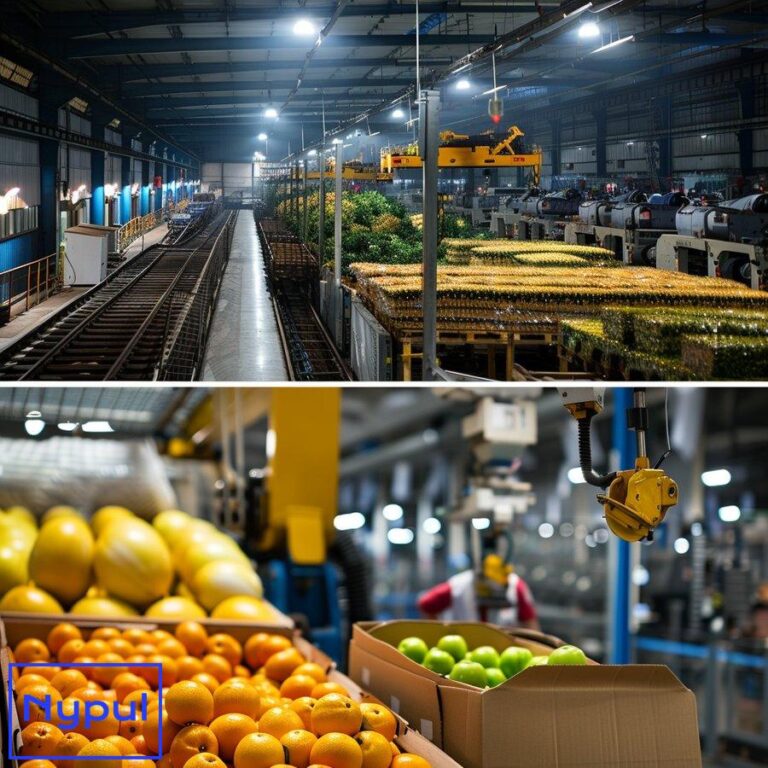What Is a Container Explain Different Types of Containers
What is a shipping container and why is it important?
A shipping container is a standardized, reusable steel box used for the safe, efficient, and secure transportation of goods by sea, rail, or road. These containers come in various sizes and are designed to be easily handled, stacked, and transferred between different modes of transportation. The use of shipping containers has revolutionized the logistics industry, making global trade more accessible and cost-effective.
The importance of shipping containers
Shipping containers have played a crucial role in the growth of international trade and globalization. They have:
- Reduced transportation costs by allowing for economies of scale and faster loading and unloading times.
- Improved cargo security by protecting goods from theft, damage, and weather conditions.
- Standardized the shipping process, making it easier to coordinate and track shipments.
- Facilitated the development of intermodal transportation, where containers can be seamlessly transferred between ships, trains, and trucks.
The impact of containerization
The widespread adoption of shipping containers has had a significant impact on the global economy and trade patterns. It has:
- Enabled the development of just-in-time manufacturing and supply chain management strategies.
- Reduced the need for manual labor in loading and unloading cargo, leading to faster turnaround times for ships and trucks.
- Contributed to the rise of large-scale container ports and the growth of cities and regions with strong trade links.
- Facilitated the growth of e-commerce and the ability to ship goods directly to consumers worldwide.
How do standard dry containers differ in size and capacity?
Standard dry containers, also known as general purpose containers, are the most common type of shipping container. They are designed for the transportation of general cargo and are available in a range of sizes to accommodate different shipping needs.
The most common dry container sizes are:
- 20-foot standard container (20′ x 8′ x 8’6″) with a capacity of approximately 1,170 cubic feet or 33 cubic meters.
- 40-foot standard container (40′ x 8′ x 8’6″) with a capacity of approximately 2,390 cubic feet or 67 cubic meters.
- 40-foot high-cube container (40′ x 8′ x 9’6″) with a capacity of approximately 2,660 cubic feet or 75 cubic meters.
Factors that influence container size selection:
- The volume and weight of the cargo to be shipped.
- The mode of transportation (e.g., ship, train, or truck) and the available space on each.
- The loading and unloading facilities at the origin and destination points.
- The need for specialized equipment or handling requirements.
Comparing standard dry container sizes:
| Container Size | Length (ft) | Width (ft) | Height (ft) | Capacity (ft³) | Capacity (m³) |
|---|---|---|---|---|---|
| 20′ Standard | 20 | 8 | 8.5 | 1,169 | 33.1 |
| 40′ Standard | 40 | 8 | 8.5 | 2,390 | 67.7 |
| 40′ High-Cube | 40 | 8 | 9.5 | 2,660 | 75.3 |
What specialized container types are used for specific cargo needs?
While standard dry containers are suitable for a wide range of goods, there are specialized container types designed to meet specific cargo needs. These containers are equipped with features and modifications to ensure the safe and efficient transportation of specialized cargo.
Some common specialized container types include:
- Refrigerated containers (reefers) for temperature-sensitive cargo, such as perishable foods and pharmaceuticals.
- Flat rack containers for oversized or heavy cargo that cannot be loaded into a standard container.
- Open-top containers for cargo that requires loading from the top, such as machinery or large items.
- Tank containers for the transportation of liquids, gases, and powdered materials.
- Bulk containers for the transportation of loose cargo, such as grains, minerals, and chemicals.
Factors to consider when choosing a specialized container:
- The specific requirements of the cargo, such as temperature, humidity, or ventilation needs.
- The size, weight, and shape of the cargo and whether it can be easily loaded and unloaded.
- The availability of specialized handling equipment at the origin and destination points.
- The cost and lead time associated with using a specialized container.
Comparing specialized container types:
| Container Type | Cargo Examples | Key Features## What specialized container types are used for specific cargo needs?
While standard dry containers are suitable for a wide range of goods, there are specialized container types designed to meet specific cargo needs. These containers are equipped with features and modifications to ensure the safe and efficient transportation of specialized cargo.
Some common specialized container types include:
- Refrigerated containers (reefers) for temperature-sensitive cargo, such as perishable foods and pharmaceuticals.
- Flat rack containers for oversized or heavy cargo that cannot be loaded into a standard container.
- Open-top containers for cargo that requires loading from the top, such as machinery or large items.
- Tank containers for the transportation of liquids, gases, and powdered materials.
- Bulk containers for the transportation of loose cargo, such as grains, minerals, and chemicals.
Factors to consider when choosing a specialized container:
- The specific requirements of the cargo, such as temperature, humidity, or ventilation needs.
- The size, weight, and shape of the cargo and whether it can be easily loaded and unloaded.
- The availability of specialized handling equipment at the origin and destination points.
- The cost and lead time associated with using a specialized container.
Comparing specialized container types:
| Container Type | Cargo Examples | Key Features |
|---|---|---|
| Refrigerated | Fruits, vegetables, pharmaceuticals | Temperature control, insulation |
| Flat Rack | Heavy machinery, vehicles | Open design for oversized items |
| Open Top | Steel coils, large machinery | Removable tarpaulin cover for top loading |
| Tank Container | Chemicals, oils, liquefied gases | Built-in tank for liquid transport |
| Bulk Container | Grains, minerals | Designed for easy loading and unloading of loose cargo |
How are containers constructed and what materials are used?

The construction of shipping containers is crucial to their durability and functionality. Containers are designed to withstand harsh environmental conditions during transportation while protecting their contents.
Materials used in container construction:
-
Steel: The primary material used in container construction is high-strength steel. This material provides structural integrity and resistance to corrosion.
-
Aluminum: Some containers use aluminum for lightweight applications. Aluminum is more resistant to corrosion but is typically less durable than steel.
-
Wood and composite materials: Occasionally used in flooring or insulation within specialized containers.
Construction process:
-
Fabrication of steel panels: Steel sheets are cut into panels that will form the walls, roof, and floor of the container.
-
Welding and assembly: The panels are welded together to create a strong frame. Reinforcements are added at corners and edges to enhance strength.
-
Surface treatment: Containers undergo surface treatment processes such as galvanization or painting to prevent rust and corrosion.
-
Installation of doors and fittings: Doors are installed at one end of the container along with locking mechanisms to secure the cargo.
-
Quality control inspections: Each container undergoes rigorous testing to ensure it meets safety standards before being released for use.
What do container markings mean and how are they identified?

Container markings provide essential information about the ownership, specifications, and contents of shipping containers. Understanding these markings is crucial for logistics professionals involved in shipping operations.
Key components of container markings:
-
Owner’s identification code (BIC code): A unique three-letter code that identifies the owner or operator of the container (e.g., “CMA” for CMA CGM).
-
Container number: A unique alphanumeric code assigned to each container consisting of four letters followed by a six-digit number (e.g., “CMAU123456”).
-
Check digit: A single digit calculated from the preceding numbers that helps verify the accuracy of the container number.
-
Container size/type code: Indicates the size (e.g., 20′ or 40′) and type (e.g., GP for general purpose) of the container.
-
Weight limits: Markings that specify the maximum gross weight allowed for loading into the container.
-
Handling instructions: Symbols indicating how to handle the container safely during loading and unloading.
Example of Container Markings
| Marking Type | Description |
|---|---|
| Owner’s ID Code | Three-letter code identifying owner |
| Container Number | Unique identifier with check digit |
| Size/Type Code | Indicates dimensions and type (GP, HC) |
| Maximum Gross Weight | Maximum weight limit (e.g., 30,480 kg) |
| Handling Instructions | Symbols indicating safe handling procedures |
How do you choose the right container for your shipping needs?
Selecting the appropriate shipping container is vital to ensuring that your goods arrive safely and efficiently at their destination. Various factors must be considered when making this decision.
Factors influencing container selection include:
-
Cargo type: Understanding whether your goods require temperature control, special handling, or protection from moisture will guide your choice between standard dry containers or specialized options like reefers or tank containers.
-
Cargo dimensions and weight: Assessing the size and weight of your shipment is crucial in determining whether it can fit within standard dimensions or if a flat rack or open-top container is necessary.
-
Transport mode compatibility: Consider how the container will be transported—by sea, rail, or truck—and ensure it meets compatibility requirements with relevant transport systems.
-
Duration of transport: Longer journeys may necessitate more robust protection against environmental factors; thus, reefer containers may be required for perishables.
Steps to choose the right container
- Evaluate your cargo requirements (type, size, weight).
- Determine if any special conditions apply (temperature control, ventilation).
- Research available container types based on your needs.
- Consult with logistics providers about availability and costs.
- Confirm compliance with shipping regulations at origin/destination ports.
What maintenance and inspection procedures are essential for containers?
Regular maintenance and inspection of shipping containers are critical to ensuring their longevity and safety during transport. Neglecting these procedures can lead to damage or loss of cargo.

Essential maintenance procedures include:
-
Regular inspections: Conduct routine checks on structural integrity, door functionality, seals, floors, and walls for signs of wear or damage.
-
Cleaning protocols: Ensure that containers are cleaned after each use to prevent contamination from previous cargo residues.
-
Rust prevention measures: Apply protective coatings or paint as necessary to prevent corrosion on steel surfaces.
Inspection checklist
- Inspect exterior surfaces for rust or damage.
- Check door seals for proper function.
- Ensure floors are intact without holes or excessive wear.
- Verify structural integrity at corners and edges.
- Document findings in an inspection log for future reference.
How have container designs evolved to meet modern logistics challenges?
The evolution of shipping container designs has been driven by advancements in technology, changes in trade patterns, and increasing demands for efficiency in logistics operations. Modern challenges require innovative solutions in container design.

Key advancements in container design:
-
Smart Containers: Integration of IoT technology allows real-time tracking of location, temperature control monitoring, and automated alerts regarding any deviations from set parameters.
-
Eco-friendly Materials: The use of sustainable materials in construction reduces environmental impact while maintaining structural integrity.
-
Modular Designs: Containers designed with modular capabilities allow for easy customization based on specific shipping needs or operational requirements.
Future trends in shipping containers
- Increased automation in loading/unloading processes through robotics.
- Enhanced security features such as biometric locks.
- Adoption of renewable energy sources like solar panels on containers.
- Development of collapsible designs for easier storage when not in use.
By understanding these aspects of shipping containers—from their basic definitions to their advanced designs—logistics professionals can make informed decisions that enhance efficiency in supply chain management while meeting modern challenges head-on.




